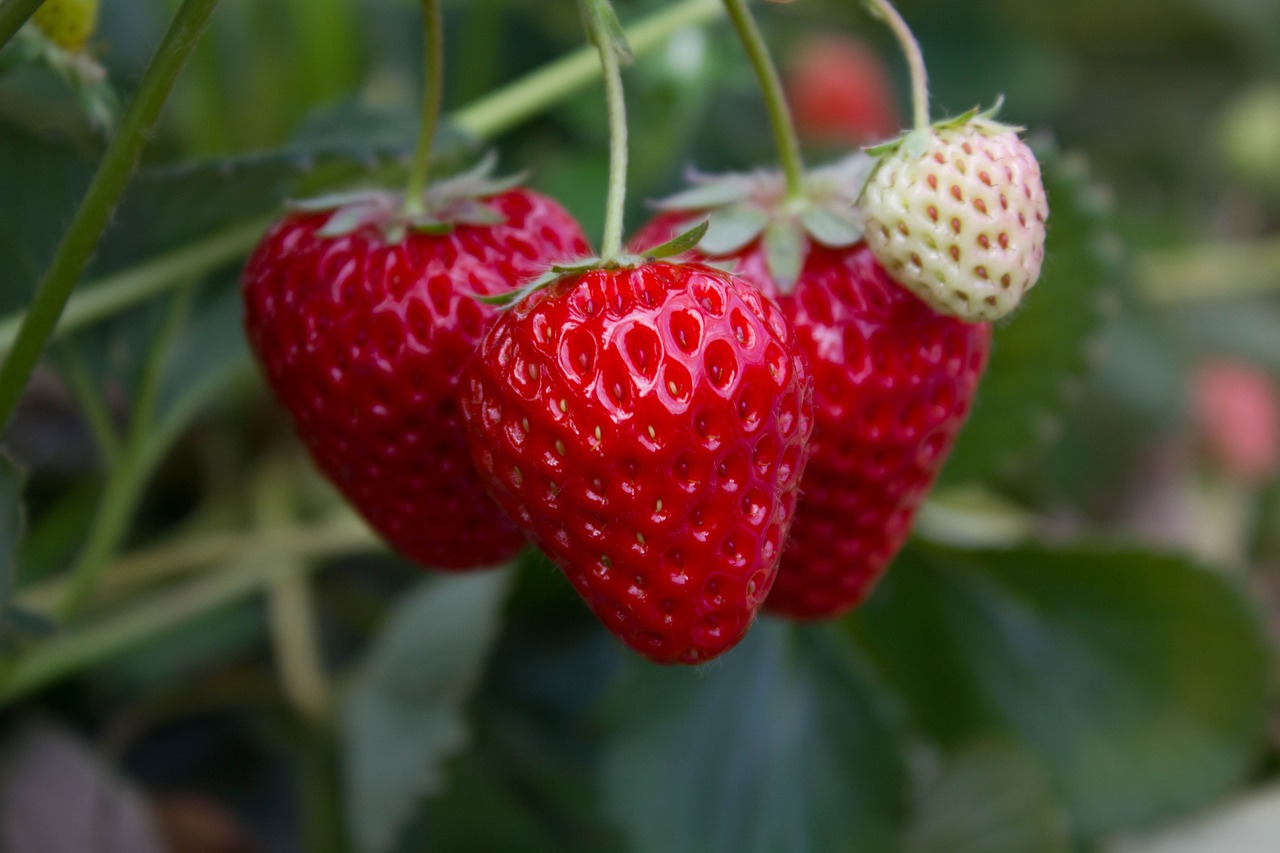
Strawberries are a delightful and versatile fruit that can be grown year-round with the right approach. Whether you’re an experienced gardener or just starting, creating your own year-round strawberry garden is a rewarding and enjoyable endeavor. In this guide, we will walk you through the process in 5 easy steps, allowing you to enjoy fresh, homegrown strawberries throughout the year.
Step 1: Choosing the Right Variety of Strawberries
As you embark on your year-round strawberry journey, the first (and arguably most delightful) step is choosing your champion berries. But wait, haven’t you heard whispers of “June-bearing,” “everbearing,” and “day-neutral” varieties? Don’t worry, we’ll navigate this fruity labyrinth together!
1. June-bearing Berries: Kings of the Summer Feast
Imagine juicy sunshine bursting on your tongue – that’s the essence of June-bearing strawberries. These robust plants deliver a single, bountiful harvest in the peak of summer, typically mid-June to early July. Think of them as the rock stars of the strawberry world, showering you with deliciousness for a concentrated period.
However, their reign of sweetness is relatively short-lived. So, if you crave berries beyond the summer sun, you might need to look elsewhere. But for those who want a burst of juicy perfection during the prime season, June-bearing varieties like ‘Honeoye’ and ‘Earliglow’ are the perfect choice.
2. Everbearing Berries: Echoes of Summer in Autumn’s Embrace
These tenacious troopers refuse to let summer fade away. Everbearing strawberries offer two waves of fruit – one in early summer and another in early fall. They’re like the reliable friends who keep the party going even after the initial sparkle subsides.
While their harvests may not be as abundant as their June-bearing counterparts, they provide a delightful extension of your berry bliss. Popular everbearing varieties like ‘Albion’ and ‘Ozark Beauty’ are perfect for those who crave a longer window of berry-liciousness.
3. Day-neutral Berries: Sun-Kissed Sweetness Regardless of the Season
Forget the calendar, these sunshine-agnostic marvels thrive in both long and short days, offering a continuous stream of fruit throughout most of the growing season. Imagine plucking ripe berries even as autumn leaves swirl around you – that’s the magic of day-neutral varieties like ‘Seascape’ and ‘Fern.’
However, keep in mind that their individual berry size might be smaller compared to June-bearing or everbearing varieties. But hey, who needs giant berries when you can have a never-ending conveyor belt of deliciousness?
So, which variety is your perfect match?
It all depends on your desires and climate! If you dream of a summertime strawberry explosion, June-bearing berries are your jam. For those who crave an extended season of sweetness, everbearing varieties are the way to go. And if you yearn for berries that defy the calendar’s whims, day-neutral choices are your passport to year-round strawberry nirvana.
Step 2: Preparing the Planting Site
Creating the perfect environment for your strawberries is essential for a successful year-round garden. Here are some key factors to consider when preparing the planting site:
- Sunlight: Strawberries need full sun to produce maximum fruit.
- Soil: Strawberries should be planted in well-drained soil that does not accumulate standing water following a heavy rainstorm.
- Space: Space the plants 12 to 18 inches apart, and the rows 3-4 feet apart
Step 3: Planting Your Strawberries
Once you’ve selected the right variety and prepared the planting site, it’s time to get your hands dirty and plant your strawberries. Follow these steps for a successful planting process:
- Timing: Plant strawberries in spring or fall based on your growing zone
- Depth: Set the plant in the soil so the crown is just above the soil surface and the roots are spread out in the soil4.
- Watering: Water the plants immediately after planting to help settle the soil around the roots
Step 4: Providing Ongoing Care
To ensure that your year-round strawberry garden thrives, it’s important to provide ongoing care and maintenance. Here are some essential tasks to keep in mind:
- Watering: Keep the soil consistently moist but not waterlogged, especially during the fruiting season3.
- Fertilizing: Apply a balanced fertilizer after planting and again in the spring. Be sure to follow the manufacturer’s recommendations for application rates.
- Weed Control: Keep the area around the plants free of weeds to reduce competition for water and nutrients
Step 5: Harvesting and Enjoying Your Strawberries
fter all the hard work, the most rewarding part of growing your own year-round strawberry garden is the harvest. Here are some tips for harvesting and enjoying your homegrown strawberries:
- Harvesting: Pick the ripe strawberries in the cool of the morning and refrigerate them right away for the best flavor and quality.
- Storage: Store the harvested strawberries in the refrigerator and consume them as soon as possible for the freshest taste.
- Enjoyment: Whether you eat them fresh, use them in delicious recipes, or preserve them for later, savoring the fruits of your labor is the ultimate satisfaction.
Creating your own year-round strawberry garden is a wonderful way to enjoy fresh, flavorful strawberries whenever you like. With these 5 easy steps, you can cultivate a bountiful supply of homegrown strawberries throughout the year. So, roll up your sleeves, get ready to dig in the dirt, and let the sweet, juicy rewards of your labor inspire you to “Grow Your Year-Round Strawberry Garden”!
